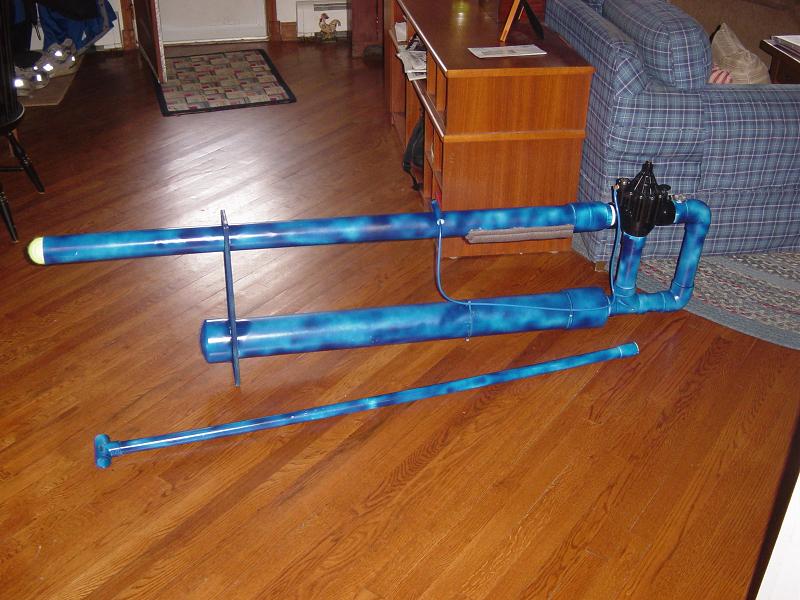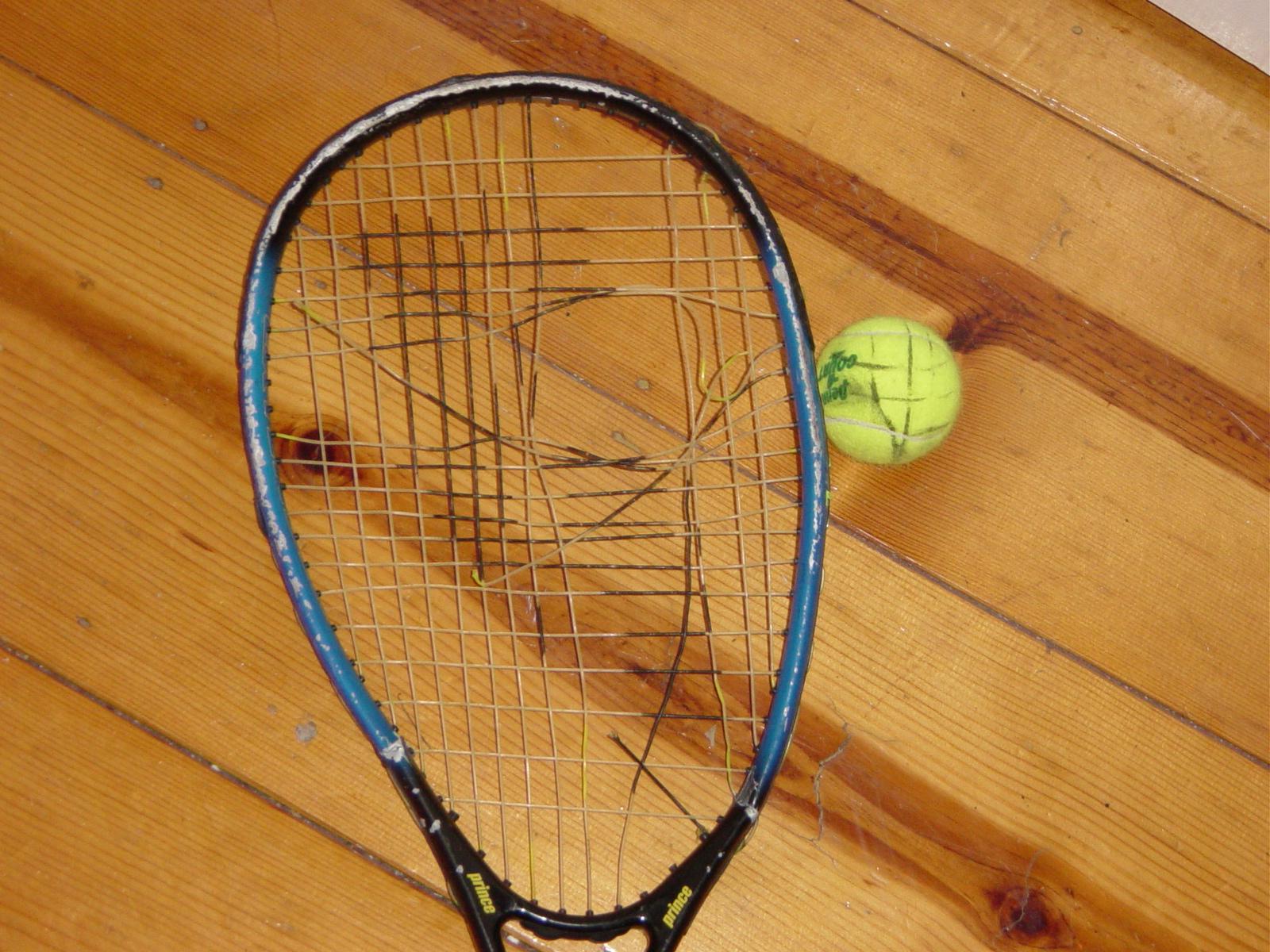|
Pneumatic Tennis Ball Launcher, Potato Gun, Spud Cannon, etc.
DISCLAIMER: I do not condone the construction of potato guns. PVC pipe can blow up in hundreds of different ways,
and it does so in an incredibly dangerous way. The information posted here is for entertainment purposes only.
I built this launcher for a friend of mine after he helped me machine some
custom aluminum frames for the 2005 ASME Regional Design Contest.
It features a 2.5" ID pvc pipe barrel (perfect for tennis balls) and a 4" ID pvc chamber. The valve is a
2" diaphragm sprinkler valve. I modified it to allow for remote pneumatic actuation rather than using
the solenoid provided. I did this by removing the solenoid and covering the opening with epoxy. I then
tapped into the chamber above the diaphragm and ran some .170" ID polyethylene tubing to a push-button
valve located midway down the launcher. The valve has the lowest working pressure at 150 psi, although
I have only tested the launcher up to 125 psi.
My chronograph
measured the velocity of the tennis ball to be about 300 mph at 40 psi. I tried to get a reading at 100 psi
but due to the recoil of the gun I couldn't get it to shoot through the beams. I assume that at 100 psi the
velocity is at least 500 mph though. Images are below and video links are at the bottom.
New Video Compilation
12/5/06: I have received several requests to post plans to build this pneumatic potato gun. I
apologize but I have an issue with posting plans to build such a dangerous device. If you have to ask how to
assemble/tap PVC pipe and valves, then I really doubt that you have the capacity to handle this device with the care
it deserves. If you want plans I am sure you can find step by step instructions on another potato gun site.
However, if you were just wondering where I purchased the materials: the 2.5" ID PVC pipe barrel, push-button valve,
safety valve, Schrader (bike tire) valve, polyethylene tubing, and tube fittings were all bough on McMaster-Carr. The 2" sprinkler
valve was purchased from Sprinkler Warehouse. And all of the non-barrel PVC pipe, glue, and pipe fittings were purchased
at the Home Depot.
2/5/07: I still have not changed my mind in regards to selling plans, I will however answer some questions
I have received multiple times.
Why is the chamber connected to the valve in two places? - Well, the valve I bought came with two ports and a cap so that you could
use whichever port was easiest to connect the sprinkler hose to. I simply used both ports for structural support.
How does the valve work? - To understand this you need a basic understanding of diaphragm valves, wikipedia has a detailed explanation
of this although they call it a "solenoid valve." Technically it is a diaphragm valve actuated by a solenoid pilot valve. In my operation,
however, I removed the solenoid valve and ran tubing to a remote, push button bleed valve to empty out the air from above the diaphragm. This
should make sense after reading the Wikipedia article.
Why did you choose that valve? - It was the cheapest 2" sprinkler valve I could find (about $60).
In all its glory...

Close up of the valve.

Nice shot of yours truly.

This tennis ball went clear through a racket taking the paint off the strings with it.
Try returning that serve!

Video:
Video Compilation
Copyright © 2005 –
All Rights Reserved
|


